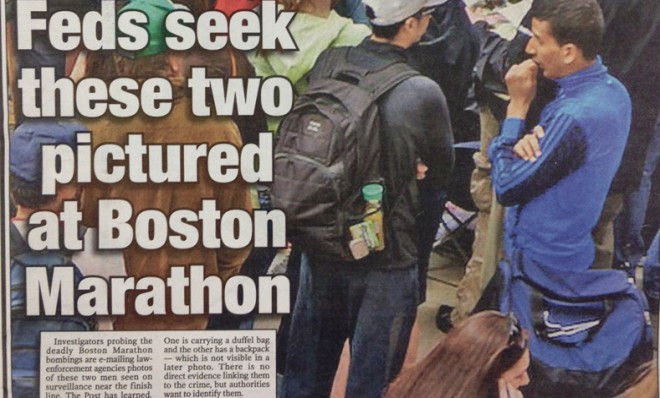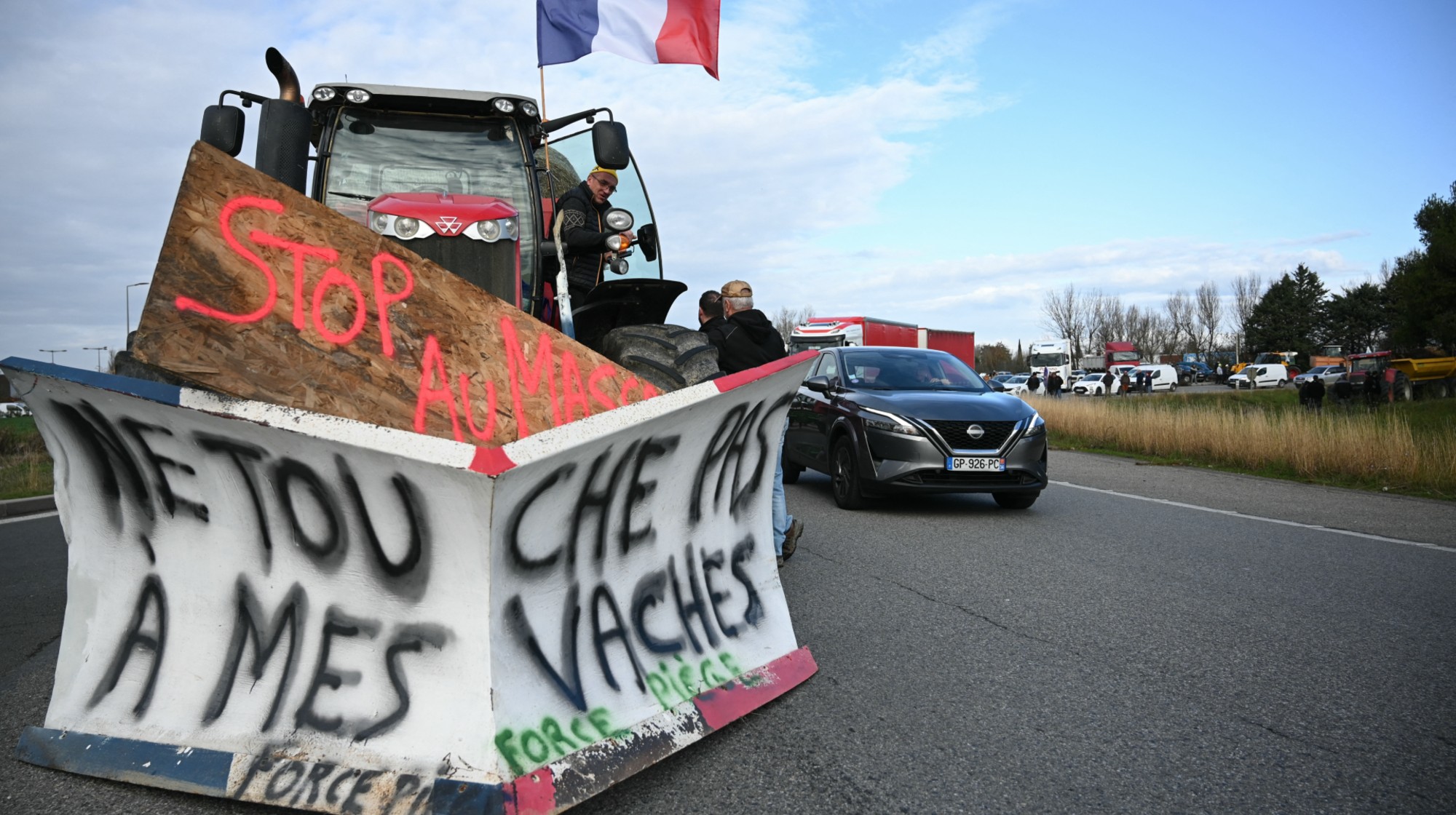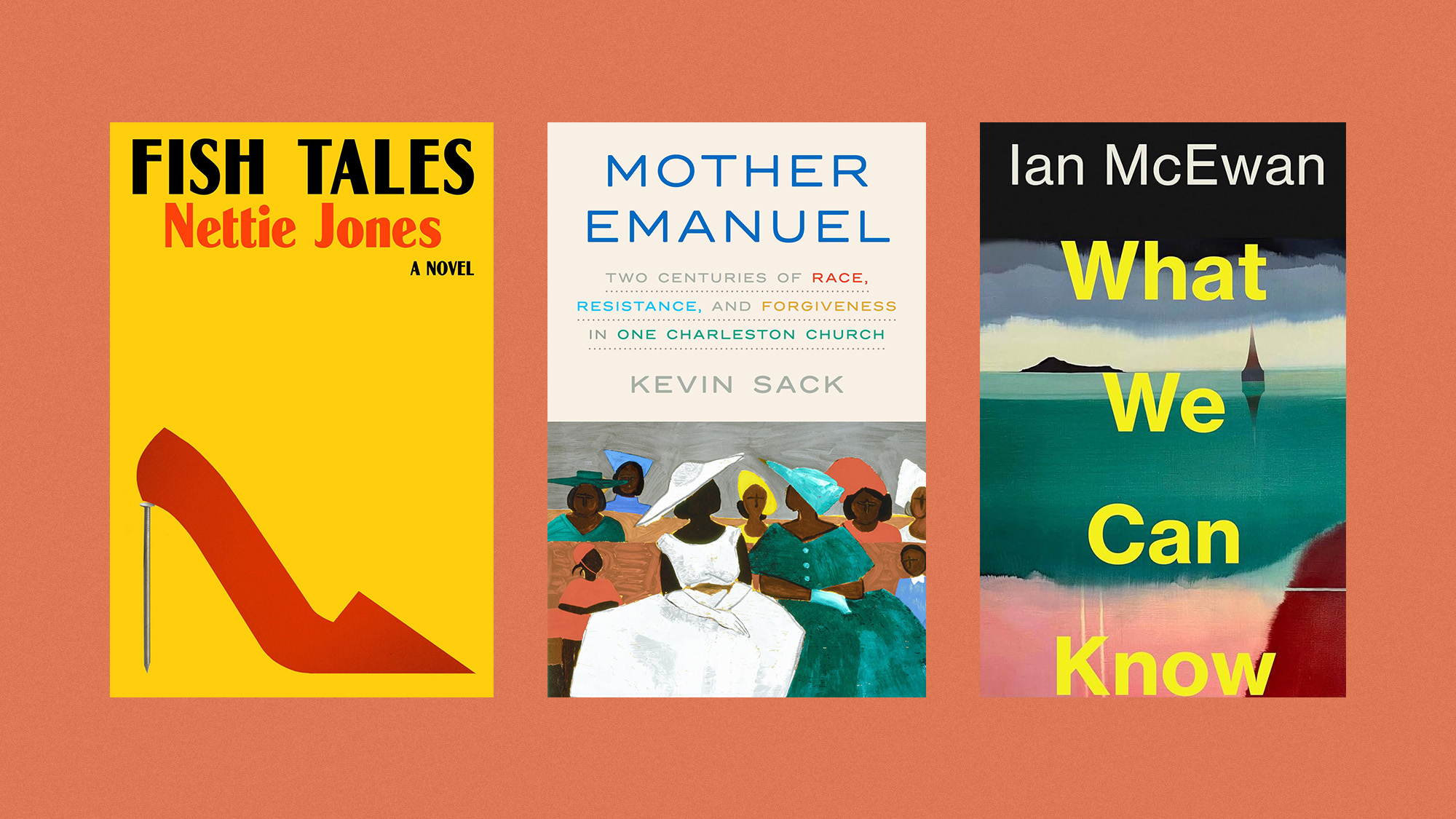N.Y. Post under fire for misidentifying Boston bombing 'suspects'
A misleading front page caps a week of erroneous reports from the Post


On Thursday, the front page of the New York Post featured two men in a crowd with the headline, "Bag Men: Feds seek these two pictured at Boston Marathon."
Only one problem: Both men are innocent.
It's the latest in a series of questionable calls the Post has made in its Marathon coverage, though many say this one is the most egregious case yet.
The Week
Escape your echo chamber. Get the facts behind the news, plus analysis from multiple perspectives.

Sign up for The Week's Free Newsletters
From our morning news briefing to a weekly Good News Newsletter, get the best of The Week delivered directly to your inbox.
From our morning news briefing to a weekly Good News Newsletter, get the best of The Week delivered directly to your inbox.
"Given all the surrounding discussion and the shaky performance of the Post and its law-enforcement sources, one might even conclude that to have slapped the photo on the front page, an editor would have had to have been cripplingly stupid, cripplingly reckless, or both," says Gawker's Tom Scocca in a blistering takedown of the Post and its Boston reporting.
Though the Post never claimed outright that the two men were suspected of carrying out the attack — the accompanying article noted an uncertainty about whether they were the same two suspects authorities have said they've identified from surveillance footage — the cover certainly implies that connection. The term "bag man" has a criminal connotation, and the two men are circled in red in a second, close-up version of a different image tucked inside the paper.
As the basis for that connection, the Post cites a law enforcement email the paper had obtained that says only that the photos were being circulated "in an attempt to identify the individuals highlighted therein." The email did not say anything about them being suspects, leaving critics to wonder why these two in particular landed on the splashy front page.
"Presumably authorities distributed many photos of people with large backpacks and duffel bags," says Deadspin's Barry Petchesky. "How did these two end up with their brown faces splashed all over the world? Do we even need to ask?"
A free daily email with the biggest news stories of the day – and the best features from TheWeek.com
Hours after the story was published, CBS' John Miller said neither of the two men were the FBI's suspects. At the same time, Reddit sleuths and the media quickly found one of their Facebook profiles, identifying him as a high school student from Revere, Mass. The student, Salah Barhoun, later spoke with ABC, saying he'd gone to authorities to clear his name after seeing his face pop up on the news and in social media.
"It's the worst feeling that I can possibly feel," Barhoun said. "I'm only 17."
The Post conceded later Thursday that both men on its cover had been cleared by investigators. However, in a statement Post editor-in-chief Col Allan defended the paper's original report.
"We stand by our story," he said in a statement. "The image was emailed to law enforcement agencies yesterday afternoon seeking information about these men, as our story reported. We did not identify them as suspects."
Still, critics remain incredulous. Poynter's Al Tompkins admonished the paper, and urged journalists to remember the case of Richard Jewell, the Atlanta security guard who was repeatedly cited as a person of interest in the media following the 1996 Olympic Park bombing. Jewell was later found innocent, and won several defamation cases against media outlets that had linked him to the attack.
We can cause great harm to individuals and to the investigation when we suggest people are suspects and when we show images with red circles around the people, making them appear to be targets.
In addition to the harm that comes to an individual, there is harm to the investigation in that the public begins to believe authorities know who they are looking for, and there is no need to help further. [Poynter]
Immediately following Monday's bombing, the Post erroneously reported for hours that 12 people had died. That same night, the paper said authorities had a Saudi suspect in custody, though that too proved false.
Jon Terbush is an associate editor at TheWeek.com covering politics, sports, and other things he finds interesting. He has previously written for Talking Points Memo, Raw Story, and Business Insider.
-
 ‘Lumpy skin’ protests intensify across France as farmers fight cull
‘Lumpy skin’ protests intensify across France as farmers fight cullIN THE SPOTLIGHT A bovine outbreak coupled with ongoing governmental frustrations is causing major problems for French civil society
-
 The best books of 2025
The best books of 2025The Week Recommends A deep dive into the site of a mass shooting, a new release from the author of ‘Atonement’ and more
-
 Inside Minnesota’s extensive fraud schemes
Inside Minnesota’s extensive fraud schemesThe Explainer The fraud allegedly goes back to the Covid-19 pandemic
